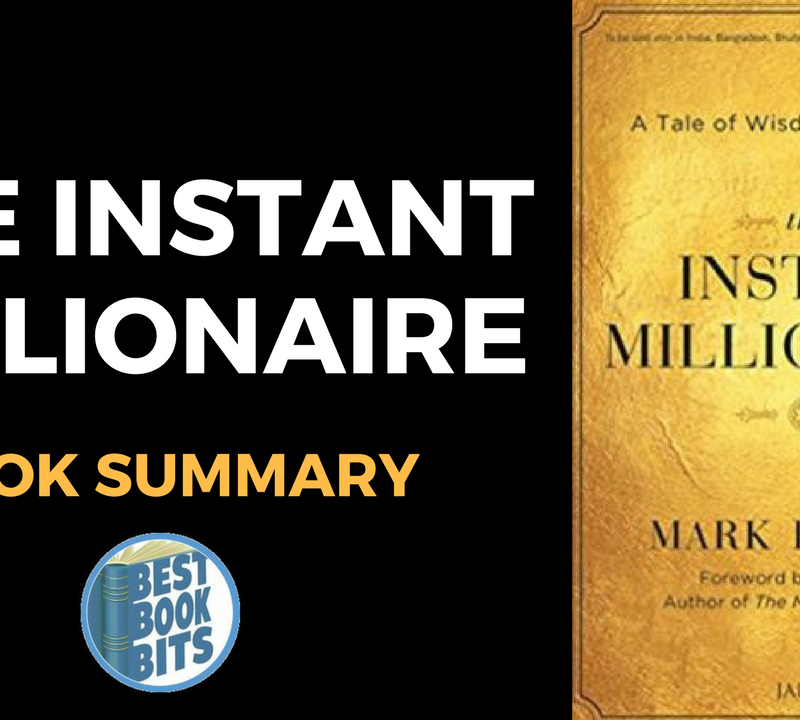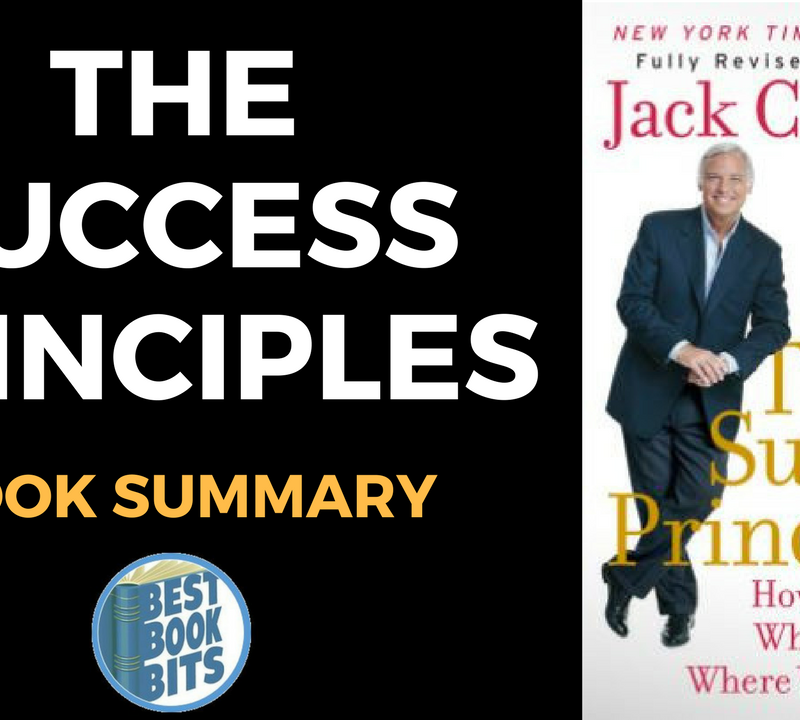★DOWNLOAD THIS FREE PDF SUMMARY HERE
? MY FREE BOOK TO LIVING YOUR DREAM LIFE”
? SPONSOR BESTBOOKBITS BY USING PATREON
? SUPPORT BESTBOOKBITS BY CLICKING THE LINKS BELOW
- 150 PDF Summaries
- Coaching Program
- Subscribe to My Channel
- Website
- Spotify
- Book Club
- Mailing List
Choose a sound financial lifestyle
- Borrowers borrow money from future (in form of credit loans) till the lifestyle collapses, consumers consume money paycheck to paycheck, keepers focus on accumulating wealth over time.
- The focus on net worth mentality (over paycheck mentality) strongly works in keepers favor.
Start early and invest regularly
- Compounding is key to building wealth, people who save and invest early on gets a huge advantage.
Know what you are buying
- Stocks represent ownership in a corporation.
- Bonds are equivalent of lending money to a corporation who returns you interest on that till it finally pays you the original value (short term bonds – <1 year, intermediate term – 2-10 years, long term – 10 years or more).
- Treasury bonds can be purchased directly from gov– Series I and TIPS are recommended as inflation protected bonds.
- Municipal bonds are state and federal tax-exempt.
- Bond funds are a collection of bonds with varying maturity dates, the weighted average maturity of them is called duration (A bond funds with duration of 4 years is expected to lose about 4% its value if interest rates go up by 1%).
- Bond fund (short term – 1 to 4 year maturity, intermediate term – 4 to 10 years maturity, long term – 10 year or more maturity)
- A 27-year old should hold ~27% of net investments in bonds.
- Mutual funds buy securities (equities, bonds or could be hybrid).
- Fund of funds buy other mutual funds (famous fund of fund is Vanguard lifestrategy funds).
- Mutual funds are priced at the end of the day (based on the value of equities/bonds they hold).
- Annuities combine insurance with investment, mixing the two is a bad idea, therefore, people are better of considering things like 401(K), IRA etc rather than annuities.
- ETFs are like mutual funds but they are traded continuously in the market (which means they can be valued at higher or lower than the value of underlying securities).
Protecting against inflation
- Inflation erodes the real value of money over time.
- Series I bondshave an inflation component, they are bought and sold directly from US treasury.
- TIPSrates are controlled by market (the only way to guarantee no loss of principal is to buy them in treasury auctions), holding them in taxable account is bad since it inflation adjustment produces taxable phantom income.
- Since TIPS are market traded, they must be held to maturity to guarantee no loss of principal (unlike I bonds which have to held only for a period of one year).
How much do you need to save
This chapter references some calculators which take numbers like future inflation rate, future returns rate (after a person turns 65), I think those numbers are just too varied to have any certainty on deciding how much to save.
Keep investments simple
- In rest of our life, we try to be better than the average, go with guts and take an action when crisis happens – all of these are bad for investing.
- Best option is to buy index funds which track a particular index (buy one with low expense ratios – since in the market you get what you don’t pay for).
- A lot of actively managed funds have good pre-tax but bad after-tax returns since they trade heavily (high turnover) and pass the realized gains to investors.
Asset allocation
- Time and again variousstudies have shown that experts cannot predict market.
- A studyshowed that among four factors (asset allocation of stocks, bonds and cash, individual security selection, market timing and costs), 93.6% returns were controlled by asset allocation, active management lead to reduction of 1.1% in returns.
- Another studyby Vanguard showed that 77% of variability of fund’s return was determined by asset allocation.
- For large domestic stocks, returns between 1935-2013 varied between (-43% to +54% – for one year period, -1% to +20% for 10 year period).
- Risk tolerance is an important consideration – when market crashes, all “experts” say that worse is yet to come and if the that fear can lead you to selling than you are better off with a more conservative (bond focused portfolio).
- International stock allocation should be about 20-40% of the portfolio.
- High yield bonds (junk bonds) are speculative and not worth the risk (given that yields are tax-inefficient) – people should buy safer bonds instead.
Costs matter
- From front-end sales commission, deferred sales charge (back end loads), purchase fee, exchange fee, 12b-1 feeand several other such fees are charged irrespective of how the fund performs.
- Funds with higher turnoverproduce bad after tax returns.
- Always try to invest in lower cost funds.
Taxes
- Stock dividends are taxed at a lower rate than regular income.
- Bond dividends are taxed as regular income.
- Long term capital gains are taxed at a lower rate.
- Unrealized gains/losses are taxed only on realization.
- Focus on tax-efficient placement.
- tax-managed fundstry to focus on improving after-tax returns.
- Tax-loss harvestinguses short term losses to reduce tax liabilities.
- If you have to buy bonds in your taxable account, buy either munis or US Savings Bonds (Series I or Series EE).
- Retirement accounts
- Always buy mutual funds after their distribution date.
- Sell profitable shares after year end to delay tax payments for a year.
Diversification
- Diversification reduces the risk of being over-exposed to certain sectors, the best diversification is to hold the entire market.
Performance chasing and market timing
- Best performers of the past had no correlation with best performers of the future, worst performance in the past though have some correlation with bad performance in the future.
- Time and again, public contests held for timing the market have shown that no one can time the stock market, all those “Three stocks to own now” are pure bull-shit.
- Predicting interest rates (to time the bond market) is equally harder.
- “Inactivity strikes us as intelligent behavior” – Warren Buffett
Investing for college
- UTMA/UGMA are bad accounts since child can do anything with them once they turn 18.
- Saving Bond (I or EE) are good since their earnings are tax free if used for educational purposes.
- Coverdell ESAhas annual contribution limit of 2000$ (after-tax contribution) and tax-free growth (if used for educational purposes), can be contributed only till child is not 18 and must be used before child turns 30 (or can be transferred to another child after that).
- 529 plansallow much larger contributions (5 times the annual gift tax limit once every 5 years), the growth is tax-deferred and withdrawals tax-free (if used for educational purposes). There is a 529 prepaid tuition plan as well which allows one to pay tuition at current rate (for a state college/university).
Managing a windfall
- Inheritance, real estate sale, lottery are difficult to manage, the first step one should take is to deposit it somewhere and leave it for 6 months, then make a wish list of short, intermediate and long term goals and get professional help to manage it.
Financial advisor
- If you are planning to have one, go for one with CFA/CFP title, go for fee-only advisors (not fee-based or anything else) since they are paid by no one except you.
- One time fee or hourly rate is another good arrangement.
Rebalance
- As asset allocation goes out of the assigned limits, rebalance.
- Rebalancing can be time-based (once every 18 monthsis best) or event based (if portfolio diverts by more than 5% than rebalance).
Tune out the noise
- All forecasting and “get rich quick schemes” are noise.
Behavioral economics
- Recency bias – If market has done bad in past one year, we believe the same for next one year.
- Overconfidence – 70% of the Americans believe they are above average. The same gets reflected in decisions about investing.
- Loss aversion – we feel pain of loss of $100 twice as much as we feel the gain of $100.
- Paralysis by analysis – too many choices of funds to invest in confuses us.
- Endowment effect – Feeling safer and overrating what we already own.
- Following the herd – It makes us feel safe to buy what everyone else is buying.
- Mental accounting – Its the habit of treating money coming from different sources as different.
- Anchoring – Holding onto investments who have badly lost its value and might never recover just because we are anchored to its past price.
- Financial negligence – Being preoccupied with other things in life in no reason to ignore finances.
Spending in retirement
- Better underspend than overspend and run out of money in retirement.
- Keep fixed living expenses as low as possible.
- Have a viable way to earn income, if needed.
- Don’t take social security paychecks till the age of 70.
- Annuity could be good for people older than 75.
- A safe withdrawal rate is 4% of initial value (or 5% of current value of portfolio)
Insurance
- Disability insurance is more important than life insurance.
- Buy insurance if downsides are huge (even is chances are low) eg. flood insurance.
- Buying insurance for narrow things (like specific diseases) is a bad idea.
- Cheapest insurance is always self-insurance.
- Carry largest affordable deductible.
- Cash-value insurance (like universal insurance) is a bad idea since it mixes insurance and investing, its best to keep the two separate.
- Rather than life insurance prefer buying term insurance.
- If your employer offers, consider HDHPfor health insurance.
- Illness and medical bills cause 50% bankruptcies.
- An umbrella policy of $1 million is a good idea to deal with potential litigations.
- If over 50, give serious consideration to buying long term care (before turning 60) since 60% population will require nursing home stays.
Inheritance
- Currently upto $5 million is tax-exempted from inheritance.
- Will takes care of passing on the assets else they will be stuck in probate (which can be lengthy and expensive).
- Living trust makes the process much more smoother (transfer assets to trust, make yourself and your spouse cotrustee and children successor trustee).
- Power of attorney for finances and for health care is a good idea as well – they become active only if the person is incapacitated and unable to make decisions. for oneself.
- Charitable Trustis another option for donation to charities with better tax treatment.
★DOWNLOAD THIS FREE PDF SUMMARY HERE
? MY FREE BOOK TO LIVING YOUR DREAM LIFE”
? SPONSOR BESTBOOKBITS BY USING PATREON
? SUPPORT BESTBOOKBITS BY CLICKING THE LINKS BELOW













